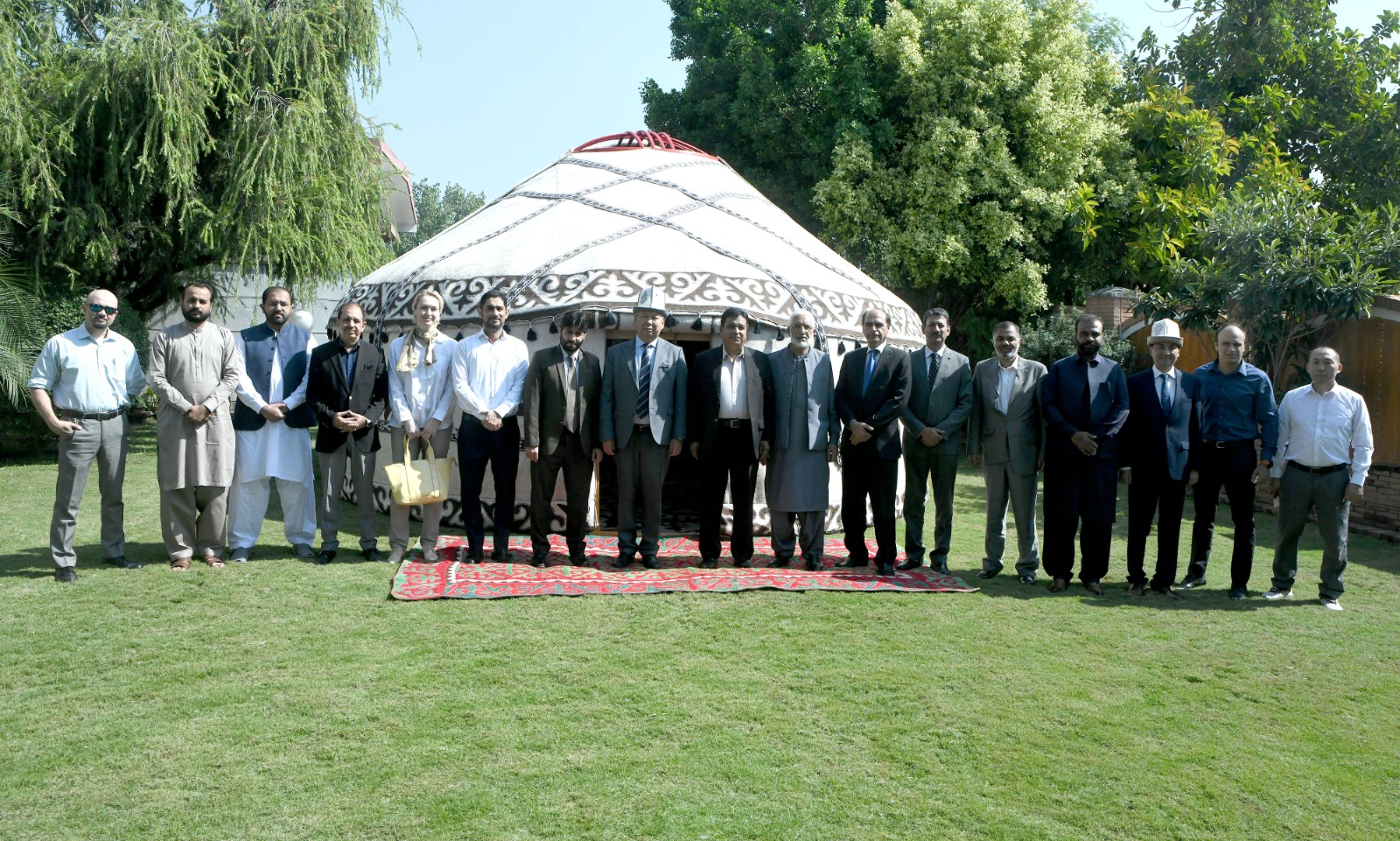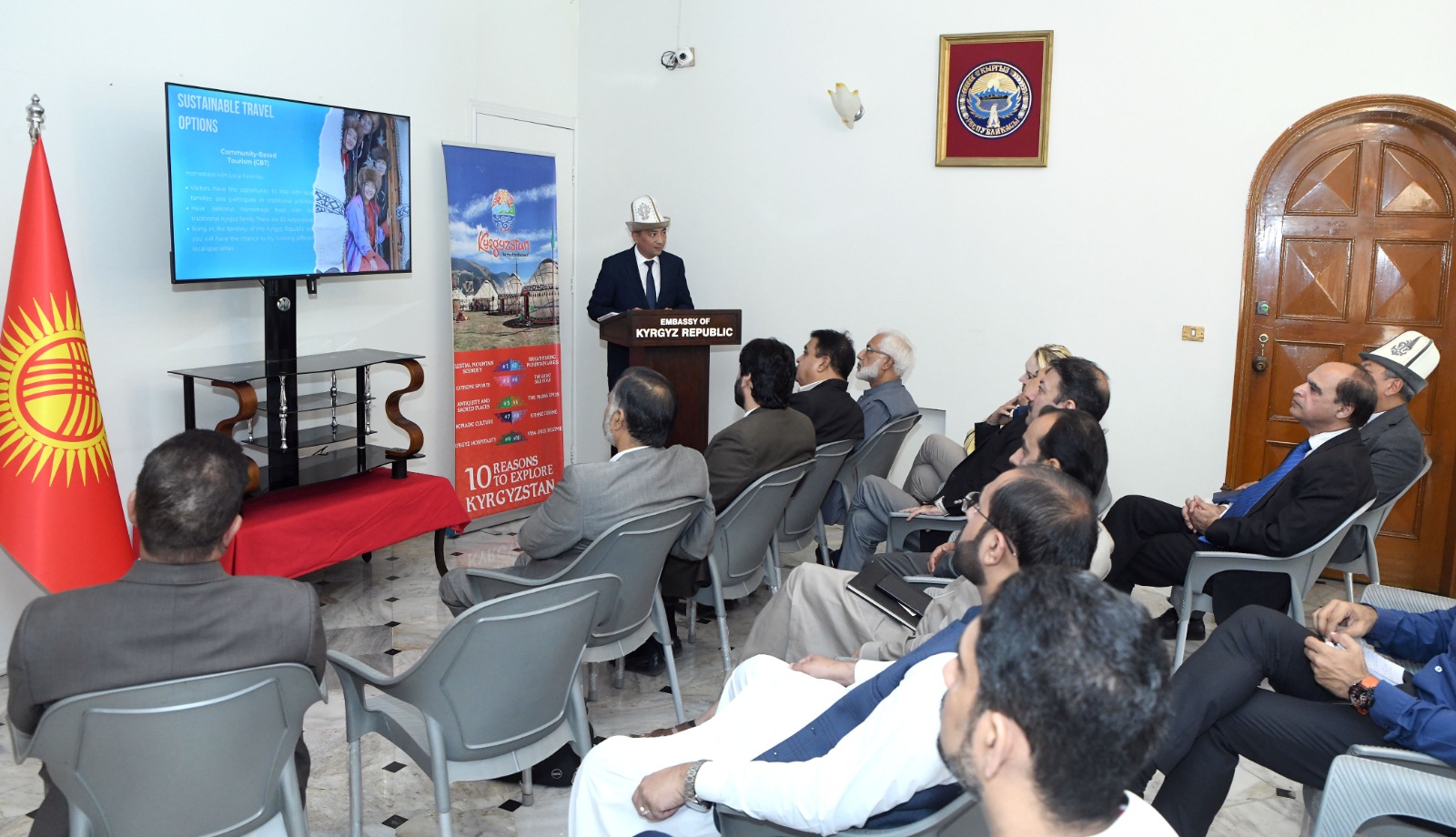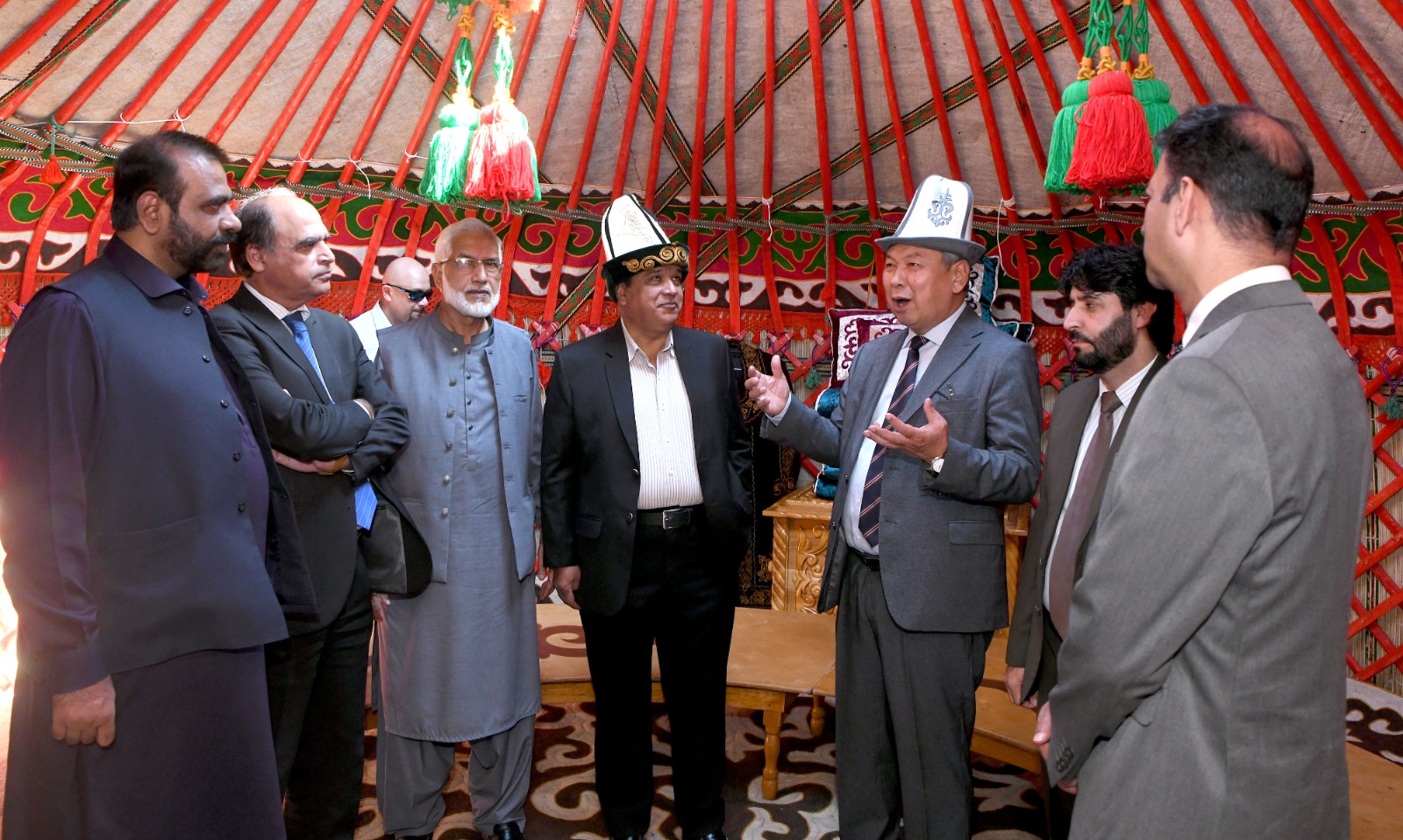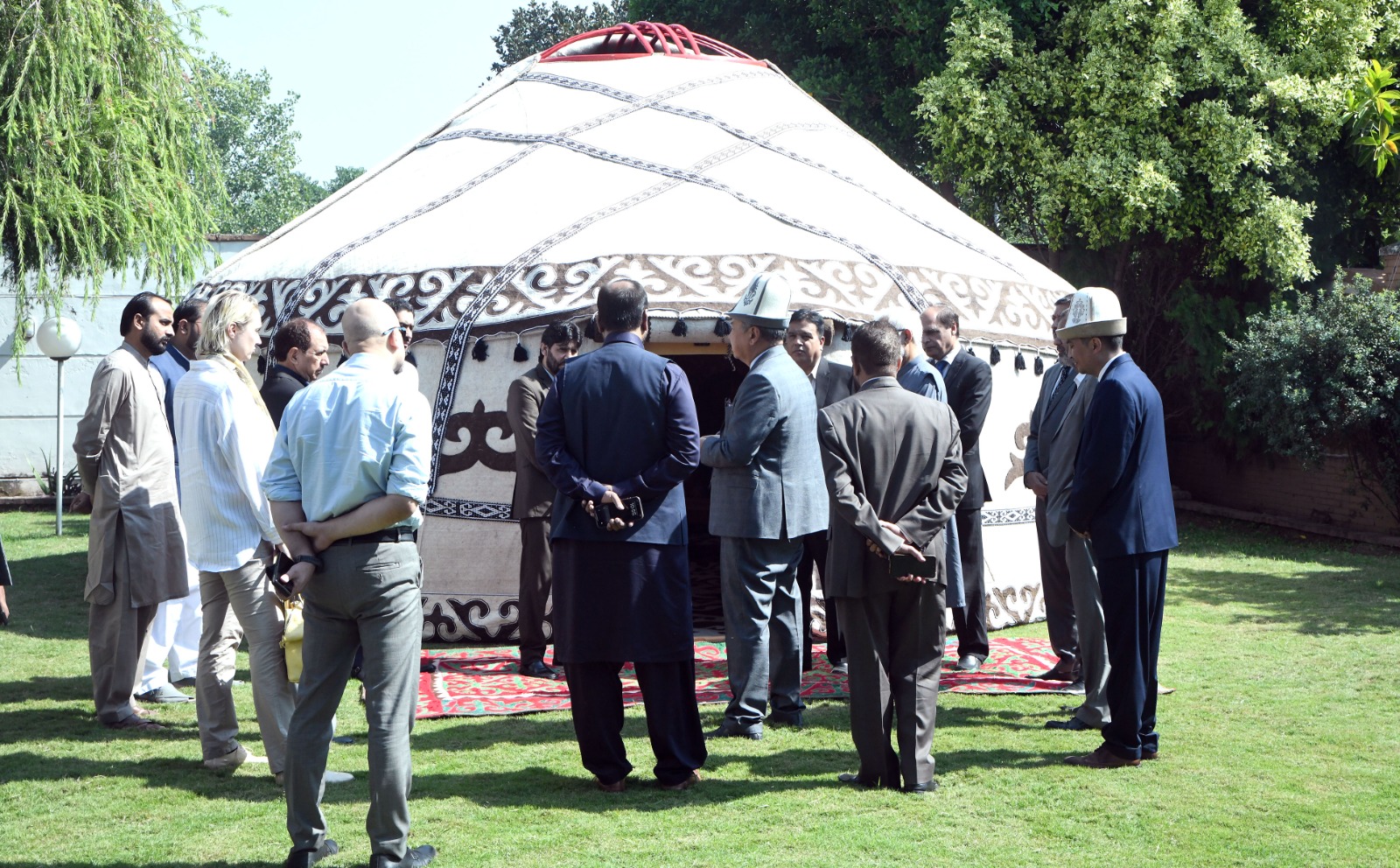ISLAMABAD: Kyrgyzstan, a landlocked country in Central Asia, is steadily rising as a unique tourist destination. Known for its breathtaking landscapes, rich history, and cultural heritage, it offers visitors an unforgettable experience.
Ambassador Avazbek Atakhanov from Kyrgyzstan presented a detailed report about tourism in the country and the potential it has.

The Kyrgyz Republic, often referred to as the “Asian Switzerland,” due to its stunning mountain terrain, is taking concrete steps to elevate its tourism industry. With efforts from the government and the private sector, the country is quickly becoming a hotspot for tourists from around the world.
Kyrgyzstan’s Natural Beauty: The Core of Its Tourism Industry
The geographical diversity of Kyrgyzstan is one of its biggest draws. Over 80% of its land is covered by mountains, and around 70% of this terrain consists of high-altitude peaks. Some of the most famous ones include Pobeda Peak (7,439 meters), Lenin Peak (7,134 meters), and Khan-Tengri Peak (6,995 meters), all attracting mountaineers and adventurers alike. Kyrgyzstan is also home to one of the longest glaciers in the world, Enilchek Glacier, a marvel of natural beauty.

With 1,923 lakes and over 40,000 rivers, the country’s landscape is dotted with bodies of water, most notably Lake Issyk-Kul, one of the largest and deepest high-altitude lakes globally. The combination of lakes, rivers, and mountain ranges offers opportunities for numerous outdoor activities, making Kyrgyzstan a paradise for nature lovers, hikers, and adventurers.
A Historical and Cultural Crossroad
Tourism in Kyrgyzstan is not only about nature but also deeply intertwined with history and culture. Located along the ancient Great Silk Road, Kyrgyzstan has played a pivotal role in cultural exchanges between the East and West for centuries. The country boasts more than 583 historical and cultural monuments, some of which are of global importance. UNESCO has recognized several sites, including Nevaket, Suyab, Balasagyn, and the sacred Sulaiman-Too mountain. These landmarks reflect the deep historical roots and the role of Kyrgyzstan in shaping regional trade and cultural exchanges.

The country is also home to intangible cultural heritage, with the “Manas” epic trilogy, the traditional Kyrgyz yurt, and felt carpets like “Shyrdak” and “Ala Kiyiz” listed in UNESCO’s World Heritage Sites. These traditions serve as a rich cultural backdrop, allowing visitors to immerse themselves in the unique Kyrgyz identity that spans centuries.
Diverse Types of Tourism in Kyrgyzstan
Kyrgyzstan offers a variety of tourism experiences, ranging from wellness and adventure to cultural and winter tourism.
Kyrgyzstan is known for its resorts that promote natural healing, such as herbal medicine, mud therapy, and kumys therapy (fermented mare’s milk). Many tourists come to rejuvenate and heal in these natural environments, where ancient practices meet modern wellness standards.
Due to its rugged terrain, Kyrgyzstan is a major destination for adventure seekers. Activities like mountaineering, hiking, horseback riding, cycling, rafting, and even hang gliding are popular. Mountain tourism, in particular, attracts climbers from all over the world, with challenging peaks and pristine trails.
Travelers interested in history and local customs are drawn to Kyrgyzstan’s rich cultural tapestry. From visiting ancient Silk Road sites to partaking in traditional Kyrgyz festivals, cultural tourism offers a deep dive into the nation’s heritage.

In the colder months, Kyrgyzstan transforms into a haven for winter sports enthusiasts. Skiing, snowboarding, and freeriding are some of the activities that attract tourists during the winter season.
Kyrgyzstan has recently started promoting business tourism by hosting international forums, summits, and conferences. Event tourism also plays a role, with national holidays, ethnic games, festivals, and sporting events drawing both locals and international visitors.
Tourism Services and Infrastructure
Kyrgyzstan is experiencing significant growth in its tourism services. In 2023, the country welcomed approximately 8.5 million foreign tourists. The services provided to these visitors include tourist and excursion packages, health resort amenities, short-term accommodations, and food services at restaurants and bars. The tourism sector has grown considerably, with services such as hotel accommodations and health resorts seeing a rapid rise.

Additionally, the stable preservation of affordable prices and the quality of service has been a major draw for tourists. Kyrgyzstan’s focus on maintaining high international standards ensures a good experience for its visitors, which in turn fosters repeat tourism.
Kyrgyzstan’s Tourism Industry
Kyrgyzstan is on the path to becoming a major tourist destination. According to the World Tourism Organization, about 27% of tourists interested in visiting Central Asia are drawn to Kyrgyzstan. The country’s potential is further amplified by the government’s active efforts in promoting tourism. These efforts are aligned with the Cabinet of Ministers’ broader national economic goals, with tourism being seen as an important pillar for development.
With a focus on sustainable tourism and increasing international visibility, Kyrgyzstan aims to become a “tourist Mecca” in the coming years. By balancing the preservation of its natural beauty and cultural heritage with the demands of modern tourism, Kyrgyzstan is well-positioned to achieve significant growth in this sector.

Kyrgyzstan’s tourism sector is a vital part of its national economy, offering diverse experiences ranging from wellness retreats to adrenaline-pumping adventures. Its rich history, cultural heritage, and natural beauty serve as major attractions for international visitors. With ongoing development and increasing recognition on the global stage, Kyrgyzstan is set to become a top destination for tourists seeking both adventure and cultural enrichment. Visitors are sure to leave the country with a deep appreciation for its hospitality, stunning landscapes, and historical significance.


























